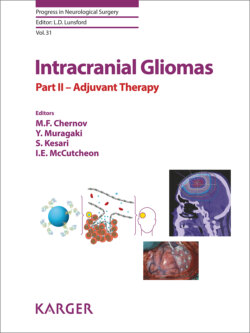Читать книгу Intracranial Gliomas Part II - Adjuvant Therapy - Группа авторов - Страница 29
CDKN2A
ОглавлениеMutations or, as is more frequently encountered, HD of CDKN2A have been identified in WHO grade II and III gliomas in 5–45% and 27–51% of cases, respectively, and in 26–68% of GBM [13, 31, 36, 50, 51, 54]. Nearly 95% of tumors with prominent deletions of CDKN2A (i.e., observed in >20% of cells) are GBM [6]. This genetic abnormality was also noted in 57% of pediatric secondary HGG, as well as in their low-grade predecessors [39]. It is detected much more often in astrocytomas than in OD/AOD, but has a similar incidence in WHO grade II and III tumors of the same histological type [54].
Loss of CDKN2A is considered the most common mechanism of the cell cycle dysregulation resulting in cellular proliferation and alteration of the proapoptotic pathways [54]. Encoded protein p16 (also known as CDKN2A) is a suppressor of CDK4, which phosphorylates the tumor suppressor pRb (retinoblastoma protein). It is widely accepted that the p16/CDK4/pRb pathway plays a key role in malignant progression of astrocytomas [6], and may be upregulated by loss of CDKN2A, as well as by amplification of CDK4 or inactivating mutations of RB1 (retinoblastoma 1; located at 13q14.2) encoding pRb. The optimal method for identification of CDKN2A deletion is FISH with commercially available probes, since assessment of nuclear expression of p16 by IHC has poor association with the presence of the molecular abnormality and its clinical consequences [54].
In pGBM alteration of CDKN2A is likely to appear early during tumorigenesis, and it is closely associated with EGFR amplification [33, 50, 51]. However, its prognostic value in GBM and OD/AOD remains uncertain [36, 50, 54]. In the same time, HD of CDKN2A is strongly associated with worse survival of patients with WHO grade II and III astrocytomas, especially in cases with co-mutations of IDH1/IDH2 and TP53[54].
